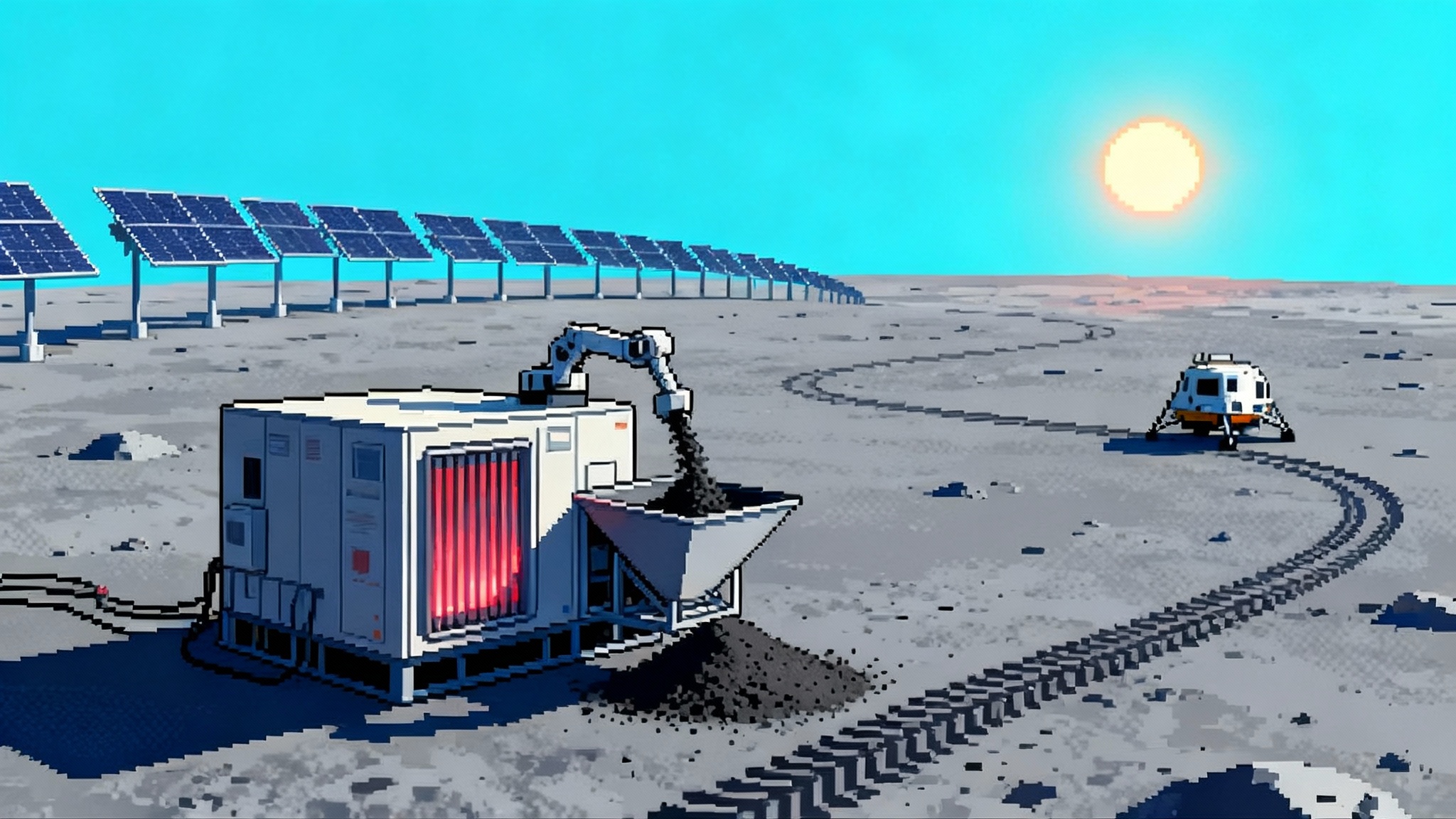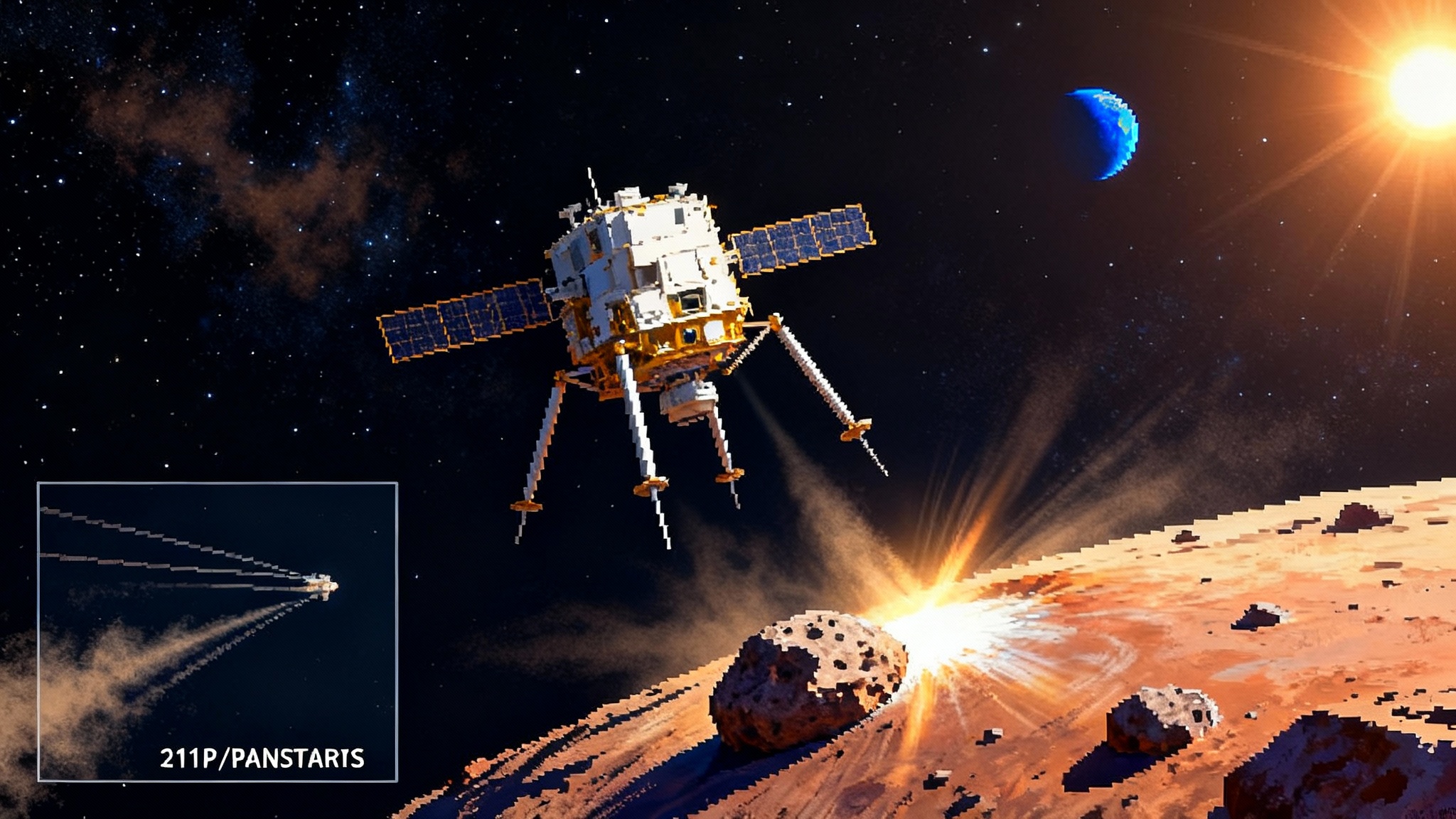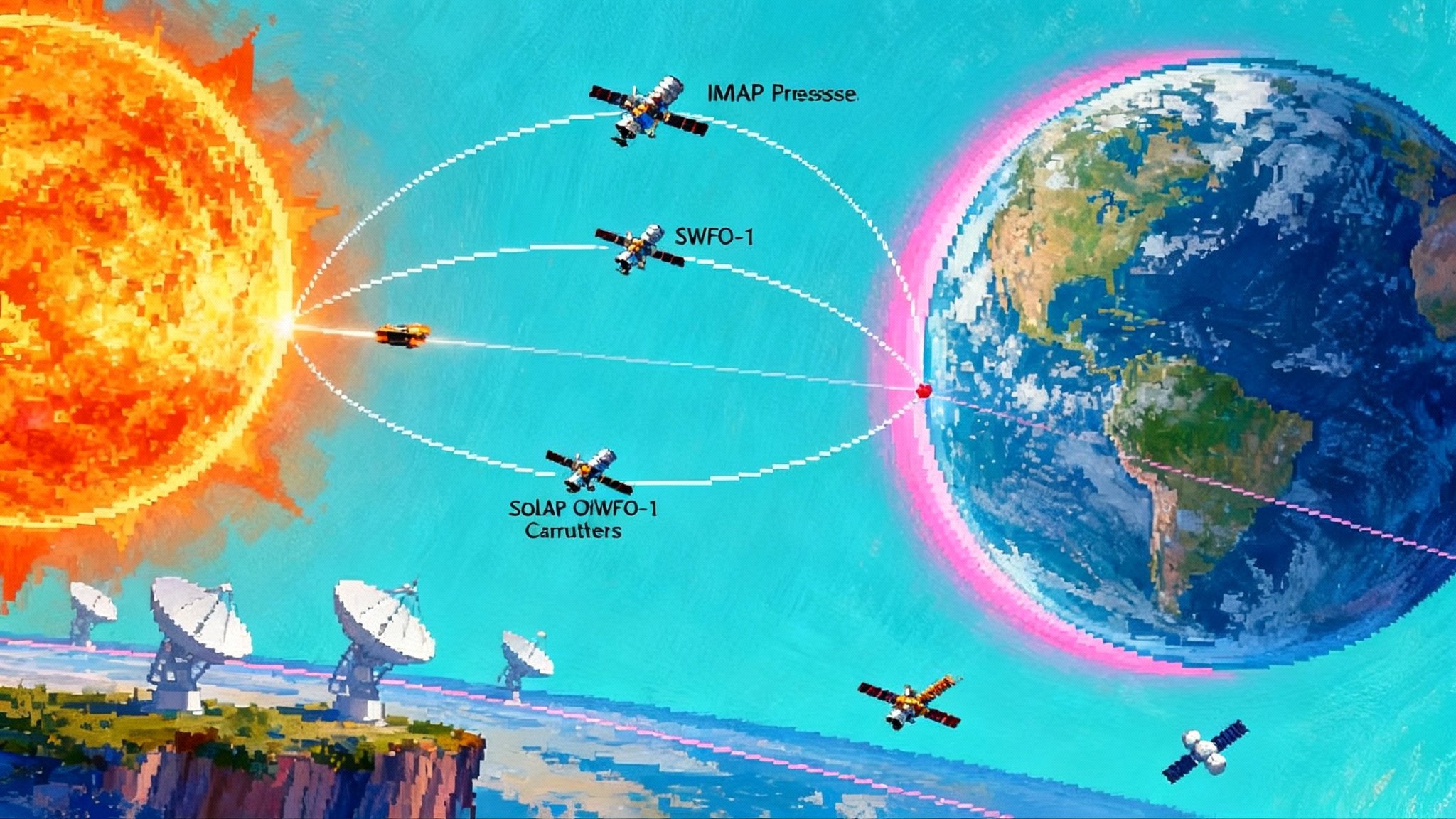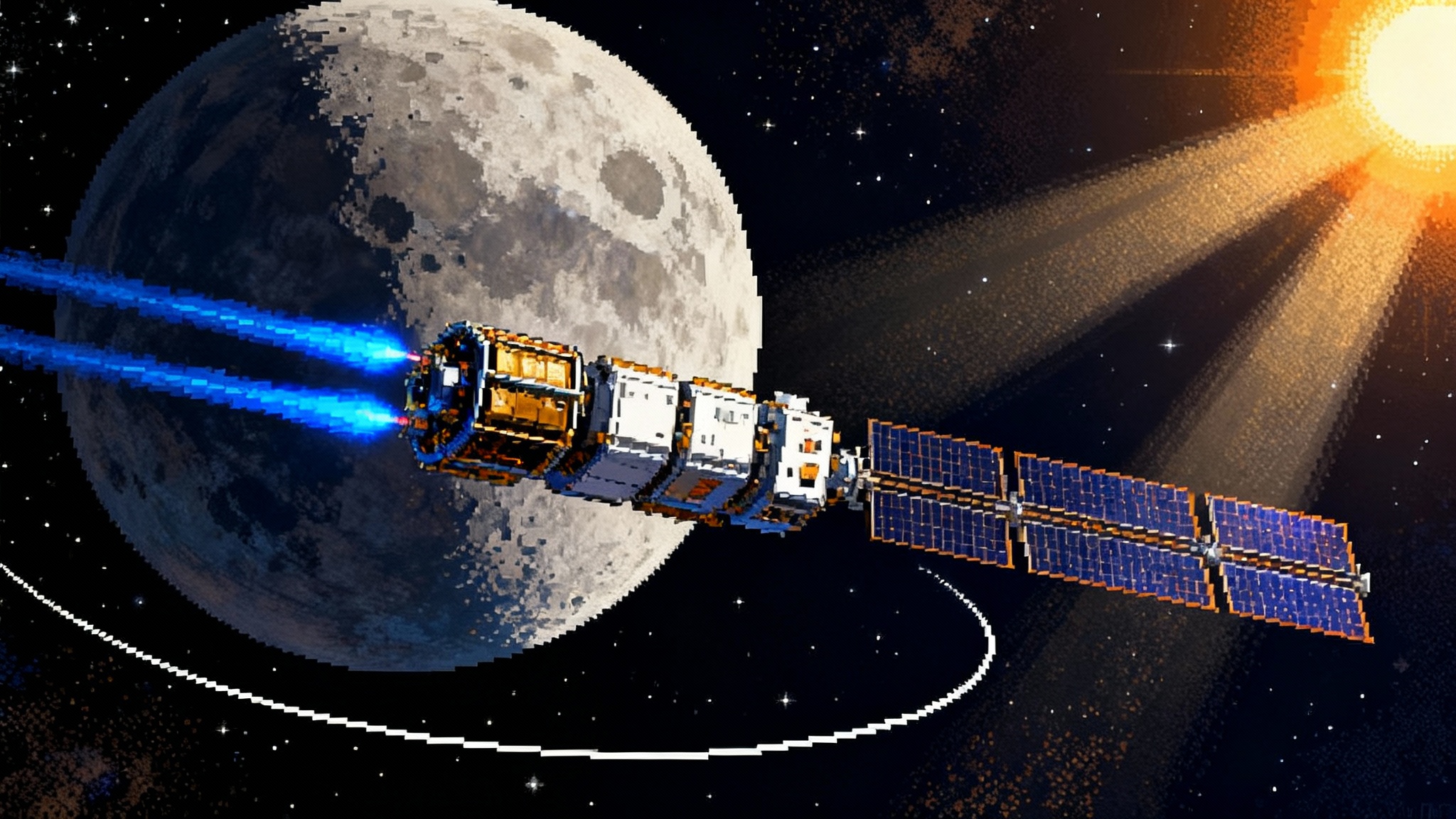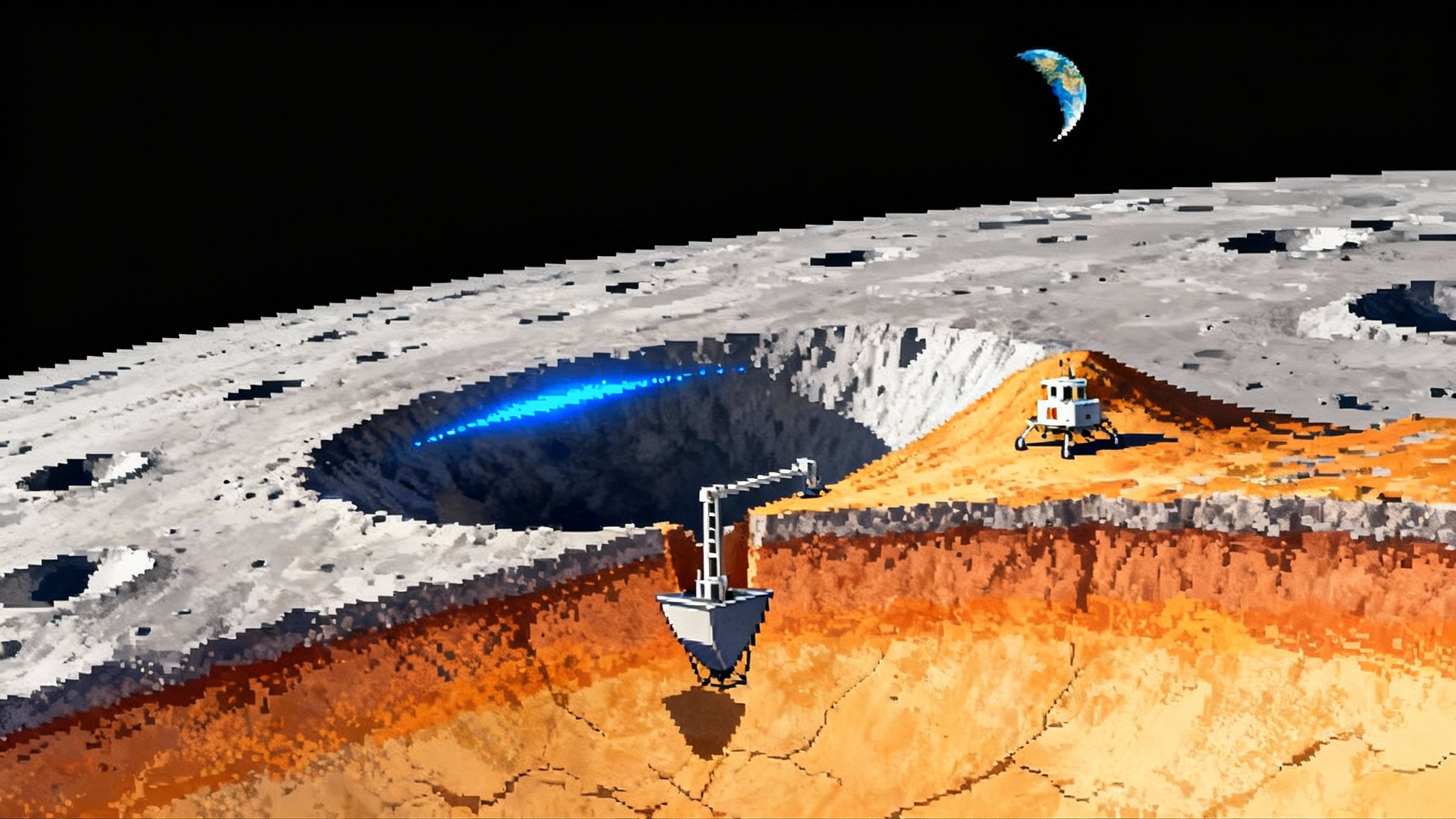ESCAPADE on New Glenn rewrites the interplanetary playbook
NASA’s twin ESCAPADE probes are back at Astrotech in Florida for a fall launch on Blue Origin’s New Glenn. The mission will map Mars space weather to sharpen habitability science and reduce mission risk, while pointing to a faster, cheaper model for planetary exploration.

The news, and why it matters now
NASA’s ESCAPADE mission, a pair of small probes built to fly in formation at Mars, is back at Astrotech in Florida with a target liftoff no earlier than this fall on Blue Origin’s New Glenn. NASA confirmed the return and the plan to fly on New Glenn under its VADR contract, a setup that intentionally trades some oversight for lower cost and more flexible scheduling to get science to space faster. That single sentence packs several firsts and near firsts into one moment, and it is why this launch window is more than a routine planetary sendoff. It is a prototype of how interplanetary science can work in the 2020s: nimble spacecraft, commercial heavy lift, and a mission architecture built around risk that is managed rather than avoided. NASA’s ESCAPADE update lays out the immediate context.
At the center of the story are two compact orbiters named Blue and Gold. They ride a single rocket and then choreograph a months long dance into complementary orbits around Mars. From those vantage points, they will watch how the solar wind whips past the planet, how the magnetized plasma twists and snaps, and how those changes peel away the upper atmosphere. That science is not just about Mars’s past. It is about how we plan for the future, from robotic aerobraking to human habitats, and about the durability of our spacecraft in an environment where space weather is a day to day operational constraint.
Why Mars space weather is not an academic footnote
Mars once had a thicker atmosphere and surface water. Today it is cold and dry at the surface, with a thin sky that offers little shielding. The long arc from river valleys to dust storms has many chapters, but one of the most important is atmospheric escape. Energy from the Sun and the solar wind transfers into the Martian system, energizing particles and lofting them away into space. Over billions of years, that slow leak changes what is possible on the ground.
Space weather is the near term expression of that energy transfer. Coronal mass ejections and fast solar wind streams can spike particle fluxes at Mars and reshape the planet’s magnetic environment for hours to days. When that happens, the rate of atmospheric loss can surge. If you are trying to understand the habitability of Mars across deep time, you need to know how often those surges happen and how strong they are. If you are operating a mission at Mars in the 2020s and 2030s, you need to know what those surges do to communications, to aerobraking plans, and to the longevity of exposed materials and electronics. For context on why better forecasts matter system wide, see how the L1 Trio will transform space weather support for exploration.
That is why ESCAPADE pairs two small spacecraft rather than one large orbiter. Single point measurements can mislead. Space weather at Mars can vary dramatically across altitude and local time. Two probes sampling simultaneously can capture cause and effect, not just correlation. Think of it as placing two microphones in a windy stadium. One records the crowd near the field, the other the echoes high in the rafters. Together you can reconstruct the event.
What the twin probes will actually measure
Each spacecraft carries a simple and surgical set of instruments that punch far above their weight.
- A magnetometer senses the local magnetic field, which at Mars is a hybrid of crustal fields frozen into ancient rocks and draped interplanetary field lines from the solar wind. Mapping how that field shifts during storms reveals where and how energy is entering the system.
- An electrostatic analyzer samples suprathermal ions and electrons. These are the particles that carry energy and momentum through the magnetosphere and that trace out escape pathways.
- A Langmuir probe measures the density and temperature of the ambient plasma, the background medium that surges and thins as storms sweep past.
The power of ESCAPADE is not any single instrument. It is the geometry. In its first science phase the pair will fly in a string of pearls formation, separated along the same orbit. That captures rapid changes during solar wind events, almost like taking a before and after snapshot every time the Sun throws a punch. Later, one spacecraft will raise its orbit while the other lowers, giving scientists a split level view that connects the upstream solar wind to the downstream response in the upper atmosphere. Those two phases bracket the chain of processes that move energy from the solar wind into the Martian system and then out again in the form of escaping atoms.
Habitability, risk, and engineering choices
It is easy to treat habitability as a purely scientific question. ESCAPADE reminds us it is also an engineering problem. If a future mission plans to dip into the atmosphere repeatedly to slow down, the timing of those passes against the space weather forecast will change heating rates and density profiles. If you are designing a long lived orbiter, the accumulated dose from energetic particles depends on how often Mars gets rattled by solar storms and how the magnetosphere flexes and shields on those days. If you envision human explorers in orbit or on the surface, you start caring about the statistical shape of storms and the reliability of alerts.
With two spacecraft making concurrent measurements, ESCAPADE can tie a change in the upstream solar wind to a change in the density of the upper atmosphere, and then to a change in escape rate. That linkage is what turns a forecast into an operational tool. It is also what turns a few dozen months of data into a model you can trust for decades of planning.
From debut to delivery: what New Glenn brings to the table
Blue Origin’s heavy lifter reached orbit on its maiden flight in January 2025, a milestone that moved the rocket from years of development to real capability. The company did not recover the first stage on that mission, but reaching orbit was the goal and it was met, proving the core propulsion and stage performance that interplanetary customers care about. AP report on New Glenn debut captured both the achievement and the work ahead.
ESCAPADE is the next kind of milestone. Getting a payload not just to orbit but onto an interplanetary trajectory requires precise delivery and careful coordination with a small body mission timeline. It demands tight navigation handoffs for cruise, then months later the choreography at Mars begins. When a launcher graduates from test payloads to planetary science, it signals to government and commercial customers that the rocket can do more than routine LEO and GEO work. It can serve as a courier for the most unforgiving schedules in spaceflight, the kinds with launch windows measured in days that open every 26 months.
For Blue Origin, this is also a statement about cadence. A heavy lift class vehicle that can toss twin planetary probes on their way in one quarter and then pivot to a different mission class in the next is the cadence NASA increasingly wants. That cadence aligns with broader ambitions like Blue Alchemist clears CDR, which hints at an expanding industrial base to support deep space work. For the agency, the strategy is to spread risk across multiple providers and to lean on commercial production lines to keep hardware flowing and prices stable.
SIMPLEx meets commercial heavy lift
ESCAPADE sits within NASA’s Small Innovative Missions for Planetary Exploration program. The acronym is accurate. The mission is small, innovative, and designed specifically to explore whether you can do big science with focused payloads and aggressive cost caps. That philosophy pairs naturally with a commercial heavy lifter and a VADR launch services agreement. The aim is to let a nimble science team exploit a launcher’s schedule and pricing, rather than waiting for a bespoke ride that keeps costs artificially high.
There is also a cultural shift embedded here. For decades, planetary science launches were rare, custom, and often tied to a single programmatic path. SIMPLEx plus VADR encourages a marketplace where different rockets can compete on price, schedule, and performance, and where small teams can hit their windows without riding the coattails of a flagship mission. If New Glenn delivers ESCAPADE as planned, it will be a proof point that the model scales beyond Earth orbit and lunar space into Mars class missions.
What success looks like, scientifically and operationally
Success for ESCAPADE is not a single photo op. It is a data stream that does not flinch during quiet times or spike days. It is synchronized measurements that let modelers invert the system, tracing energy and particles from the shock that forms upstream of Mars, through the draped magnetic field lines, into the patchwork of crustal magnetic umbrellas, and out along escape channels.
Operationally, success looks like a handover from a commercial rocket to a small deep space avionics stack that is robust enough to navigate a cruise to Mars and execute burns for capture without drama. It looks like months of formation flying in a gravitational field that is lumpy enough to make precession work for you if you plan it right, but unforgiving if you get the phasing wrong. It looks like steady downlink, clean instrument modes, and mission operators who know when to switch from campaign A to campaign B without burning precious propellant.
The downstream benefits are tangible. Better escape rate models feed into climate histories that have realistic uncertainty bars. Better space weather coupling models inform strategies for aerobraking and for operating sensitive instruments during storms. On the engineering side, more confident forecasts reduce buffer time, and reducing buffers is one of the few honest ways to trim mission cost without robbing science.
Why a dual probe is the right tool for this job
You could imagine a single large orbiter with multiple sensors trying to stitch together a picture of Mars’s magnetosphere by sampling different regions over time. The problem is that space weather is not steady. By the time a lone spacecraft completes one pass and starts another, the system has changed. Two spacecraft, even if modest, unlock causality. One can sit upstream and watch the solar wind arrive. The other can sit in the upper atmosphere and watch the response. They can swap roles over the mission. Cross correlating those measurements turns a messy time series into a map of interactions.
The dual probe strategy also buys resilience. If one spacecraft suffers a fault, the other can still carry a meaningful subset of the science. And because each unit is identical, the mission avoids the complexity and cost of building two different payload stacks.
A turning point for Mars missions that cost less and fly sooner
ESCAPADE is not a flagship. That is the point. It is a focused mission with tight objectives, designed to be built quickly on a commercial bus with heritage parts. It aims to answer a specific set of questions that have outsized leverage. If it works, it will validate an approach where NASA and its partners fly more often, learn faster, and tolerate controlled risk in exchange for timelines that match how quickly the Sun and the market change.
A commercial heavy lifter like New Glenn can make that playbook practical by offering frequent slots and enough performance to accommodate oddball interplanetary trajectories without bespoke accommodations. The benefit to science is obvious. The benefit to industry is a steady pipeline of missions that harden a rocket family for deep space work. Trajectory realities can be unforgiving, as BepiColombo thruster shortfall reshaped trajectory reminds us, which is why delivery accuracy and margin matter. That, in turn, supports the infrastructure needed for more ambitious goals, from sample return logistics to human precursors that scout radiation and dust environments months or years ahead of a crew.
What to watch between the pad and Mars orbit
- Integration milestones at Astrotech. Propellant loading, closeouts, and spacecraft integration to the rocket fairing are the quiet, critical steps that make or break a clean launch campaign.
- Launch vehicle readiness. New Glenn’s flight readiness review and range coordination will tell you how mature the operational flow has become since its debut.
- Injection accuracy. The initial burn sequence and separation define the margins for cruise. Deep space navigation can correct small errors, but precision here pays dividends later at Mars.
- Cruise and Mars capture. The twin buses will need to perform a sequence of deterministic burns with room for trajectory correction maneuvers. Capturing into the planned elliptical orbits without large dispersions sets up the dual geometry that makes the science sing.
- Phasing into the string of pearls and then into the split geometry. That is when ESCAPADE turns from a pair of travelers into a coordinated observatory.
The bigger picture
The past decade has seen commercial launch become the default to Earth orbit. The next decade is where commercial launch starts to become the default to everywhere else. ESCAPADE’s ride on New Glenn is a postcard from that future. It says that a small science team can build two interplanetary probes, put them on a commercial manifest, and go answer a pressing question about how planets work and how we can safely work around them.
If the mission delivers, expect to see more of this pattern. Dual probes to the Moon’s plasma environment, small constellations that watch the solar wind from multiple vantage points, and targeted atmospheric explorers that drop into the skies of Venus or Titan. The technology is ready. The business models are catching up. The science payoff is direct.
For Mars, the payoff is a better map of how space weather sculpts a world without a global magnetic field. For future missions, it is a handbook for operating in that world with fewer surprises. For New Glenn, it is a line on a manifest that separates a heavy lifter that can reach orbit from a system that can help humanity reach further.


